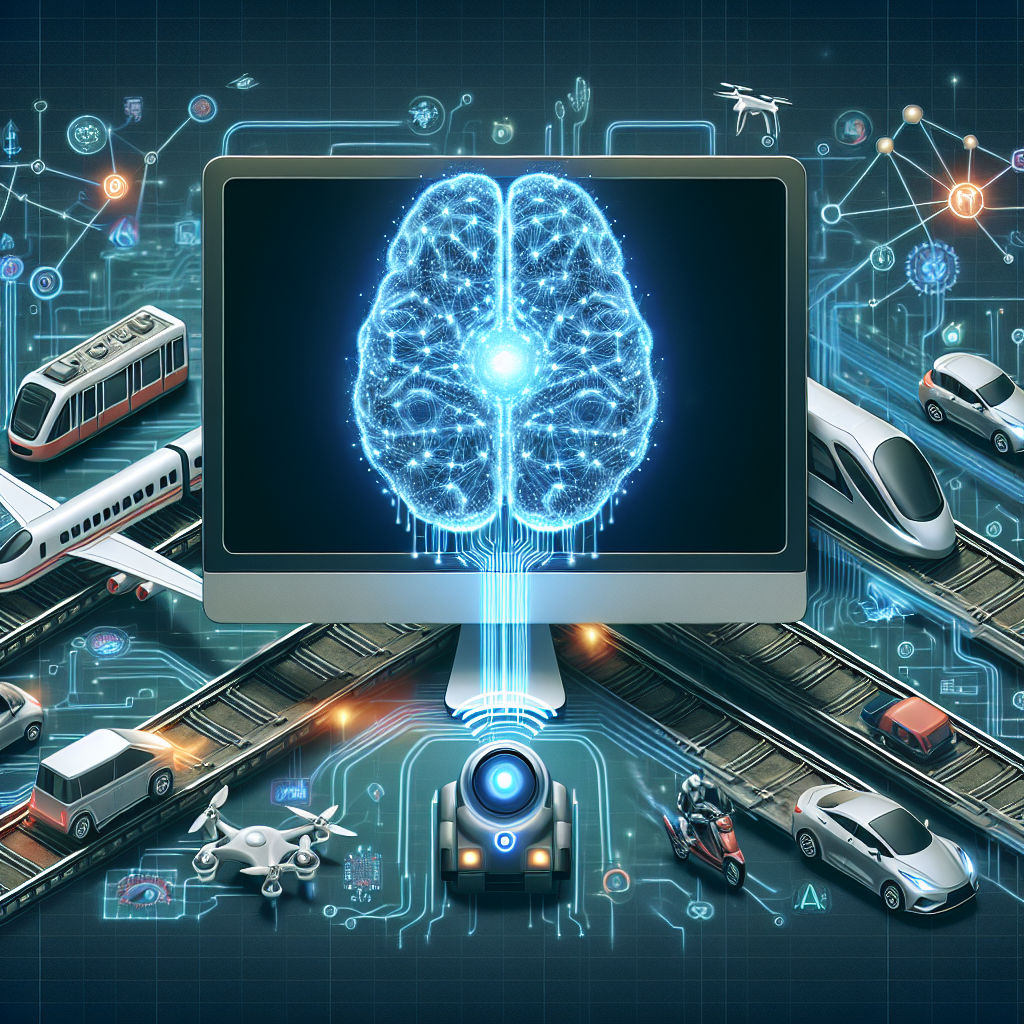The Impact of AI Software on Transportation
Artificial Intelligence (AI) has been rapidly transforming various industries, and one of the sectors that has been significantly impacted is transportation. AI software has the potential to revolutionize the way we travel, making transportation safer, more efficient, and more environmentally friendly. From self-driving cars to predictive maintenance of vehicles, AI is reshaping the transportation landscape in numerous ways. In this article, we will explore the impact of AI software on transportation and discuss its implications for the future of mobility.
1. Self-Driving Vehicles
One of the most prominent applications of AI in transportation is the development of self-driving vehicles. Companies like Tesla, Google, and Uber have been investing heavily in autonomous vehicle technology, with the goal of creating vehicles that can navigate roads without human intervention. AI algorithms enable these vehicles to perceive their surroundings, make decisions, and navigate complex environments in real-time. Self-driving cars have the potential to reduce accidents, improve traffic flow, and provide mobility solutions for individuals who are unable to drive themselves.
2. Traffic Management
AI software is also being used to optimize traffic flow and reduce congestion in urban areas. By analyzing real-time data from sensors, cameras, and GPS devices, AI algorithms can predict traffic patterns, adjust signal timings, and provide route recommendations to drivers. Intelligent traffic management systems can help cities improve the efficiency of their transportation networks, reduce emissions, and enhance the overall quality of life for residents.
3. Predictive Maintenance
AI software is transforming the way vehicles are maintained and serviced. By analyzing data from sensors and monitoring systems, AI algorithms can predict when a vehicle is likely to experience a breakdown or malfunction. This allows maintenance teams to proactively address issues before they escalate, reducing downtime and improving the reliability of the transportation fleet. Predictive maintenance can also help reduce costs associated with repairs and extend the lifespan of vehicles.
4. Ride-Sharing and Mobility Services
AI-powered ride-sharing platforms like Uber and Lyft have revolutionized the way people commute in cities. By using algorithms to match passengers with drivers, optimize routes, and adjust pricing based on demand, these platforms have made transportation more convenient and accessible. AI software is also being used to develop new mobility services, such as on-demand shuttle services and shared autonomous vehicles, which offer flexible and cost-effective transportation options for individuals and communities.
5. Environmental Impact
AI software has the potential to reduce the environmental impact of transportation by optimizing fuel consumption, reducing emissions, and promoting sustainable modes of travel. By analyzing data on traffic patterns, vehicle performance, and weather conditions, AI algorithms can help drivers minimize their carbon footprint and make more eco-friendly transportation choices. AI-powered electric vehicles and autonomous shuttles are also being developed to promote cleaner and greener forms of mobility.
FAQs
Q: What are the benefits of AI in transportation?
A: AI software in transportation offers numerous benefits, including improved safety, increased efficiency, reduced congestion, enhanced mobility options, and lower environmental impact. By leveraging AI algorithms, transportation systems can become more responsive, reliable, and sustainable.
Q: Are self-driving cars safe?
A: Self-driving cars are still in the early stages of development, and there are ongoing debates about their safety and reliability. While autonomous vehicles have the potential to reduce accidents caused by human error, there are concerns about their ability to navigate complex environments and interact with other road users. Companies are continuously testing and refining their self-driving technologies to ensure they meet rigorous safety standards.
Q: How is AI being used in traffic management?
A: AI software is being used in traffic management to analyze real-time data, predict traffic patterns, optimize signal timings, and provide route recommendations to drivers. By leveraging AI algorithms, cities can improve the efficiency of their transportation networks, reduce congestion, and enhance the overall quality of life for residents.
Q: What is predictive maintenance in transportation?
A: Predictive maintenance in transportation involves using AI algorithms to analyze data from sensors and monitoring systems to predict when a vehicle is likely to experience a breakdown or malfunction. By proactively addressing maintenance issues, transportation companies can reduce downtime, improve reliability, and lower repair costs.
In conclusion, AI software is reshaping the transportation industry in profound ways, from self-driving vehicles to intelligent traffic management systems. By leveraging AI algorithms, transportation systems can become safer, more efficient, and more environmentally friendly. As AI technology continues to evolve, we can expect to see even greater advancements in mobility and transportation in the years to come.

